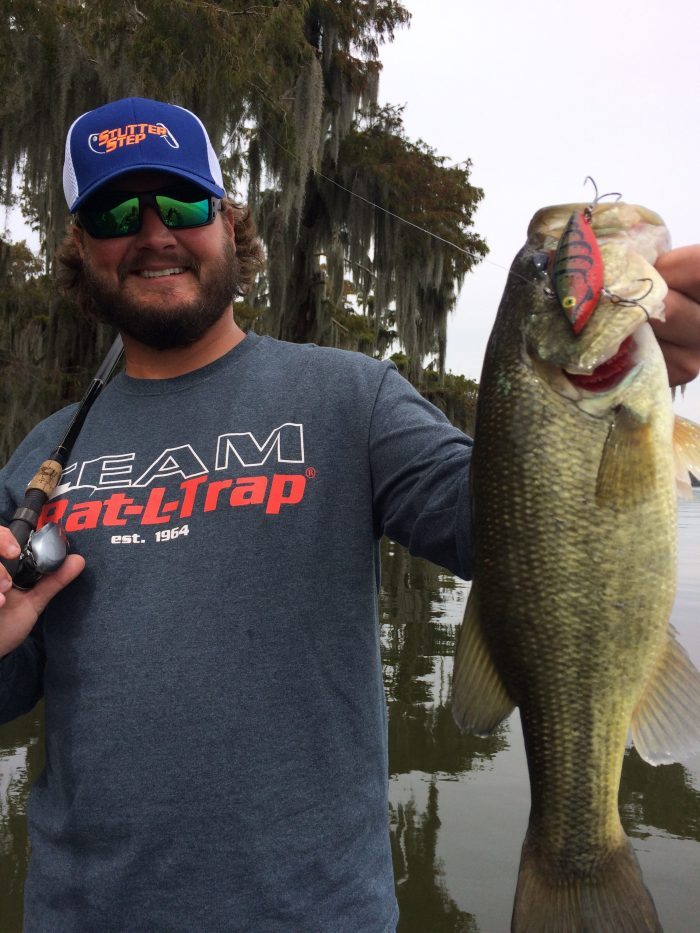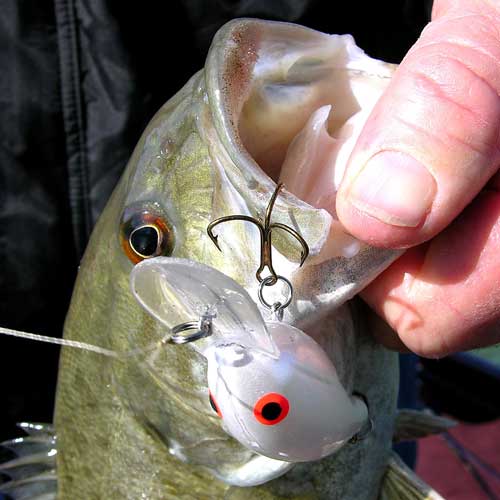- BassEdge.com - Pursue Your Passion
Search Baits For All Seasons by John Neporadny Jr.

THE EDGE – Episode 245 – Cliff Crochet
December 1, 2016
Evers Key to Fishing Weights
December 12, 2016When you have to fish as many unfamiliar waters as pro bass anglers do, you need a couple of reliable search baits for finding bass in a hurry. Bassmaster Elite Series pro Scott Rook relies on crankbaits and flipping tubes when he needs to find bass in practice, no matter where he is on the tournament trail.
“You can cover a lot of water with crankbaits since they come in deep- or shallow-running models,” Rook explained. “And the one bait I have tied on everywhere I go is a tube. The first thing I am going to start doing is looking for shallow fish, and the tube is my favorite flipping bait.”
Crankbaits are dependable search baits because they are good year around fish locators. In the early spring, Rook likes to use flat-sided crankbaits, and as the water warms and the fish move into shallower muddy water the Arkansas pro switches to a square-bill crankbait that features an extremly wide wobble. A lipless crankbait is Rook’s choice for most fall fishing.
“When the fish get up on the flats, you can cover a lot of water with a lipless crankbait.”
For clear, cold-water situations, Rook opts for the tight wiggle of Rapala DT10 and Shad Rap crankbaits.
Rook pays more attention to seasonal patterns than water clarity when choosing crankbait colors. When the water is cold and shad are deep in the late winter and early spring, he prefers crawfish-color crankbaits — brown-and-orange or red.
“It seems like you can get more of a reaction bite out of an orange or red crankbait.”
These colors also produce because Rook is often targeting rocky banks, which hold more heat during this time of the year and attract crawfish.
When throwing crankbaits in the summer, Rook favors a chartreuse (with blue back) model no matter what the water clarity.
“Even in real clear water that chartreuse with a blue back works real well for me” said Rook, who recalled catching bass on it even in the crystal clear waters of Nevada’s Lake Mead. “I took a chartreuse-and-blue DD22 and could see it all the way down where it hit the salt cedars. I could actually see the fish come out underneath that bait at 20 feet deep.”
In the fall, Rook’s choice of crankbait color is based on water clarity.
“If the water is muddy in the fall, I might throw a fire tiger crankbait, but if it is clear I go to the shad colors or chrome and blue back.”
Crankbaits are ideal for covering water in a hurry, but Rook also likes the versatility of the tube for locating fish, which he says works well in clear and stained water. Rook takes issue with those who consider the tube a slow-moving bait
“When I am flipping I have it on a 5/16- or 3/8-ounce weight most of the time so I can move it pretty fast. I can probably flip a tube as fast as most people can go down a bank with a spinnerbait.”
Rook prefers a tube over a jig because of its erratic fall and the weight adjustments he can make to the soft plastic lure.
“I have found that a jig works for me better in cooler water, but when the water gets warm, I can change the weight of my tube better.”
He also believes a tube will trigger more reaction strikes than a jig when pairing it with a heavier weight, which creates a faster and more erratic fall. Moving the tube at a quick clip is a good summer technique.
“If I can get it on a limb or a clump of grass and yo-yo it, that is my favorite way to use it. The tube doesn’t fall the same way every time like a jig, which seems to fall in the same direction every time.”
Changing weights increases the versatility of the tube bait, but Rook notices some anglers fail to make this simple adjustment. During the 2001 Bassmaster Classic, Rook discovered how much difference a weight change can make. The first day of the tournament, he started with a 5/16-ounce weight and hooked a fish that broke his line. He then picked up a rod with another tube, but didn’t get a bite for the next two hours.
“I then realized I had a 1/4-ounce weight rather than the 5/16, so I rigged up my other rod with a 5/16-ounce weight and caught a limit within an hour. It was the faster, erratic fall that made all the difference.”
Most of the time, Rook pegs his weight to the tube with a toothpick.
“I like for my bait to stay with the weight when it falls through tree limbs or comes through grass. I don’t like it to separate from the weight because it doesn’t have that fast, erratic fall when it’s not pegged.”
Though other lures can find fish in a hurry, Rook has proved that crankbaits and tubes offer enough versatility to serve as search baits for all seasons.


